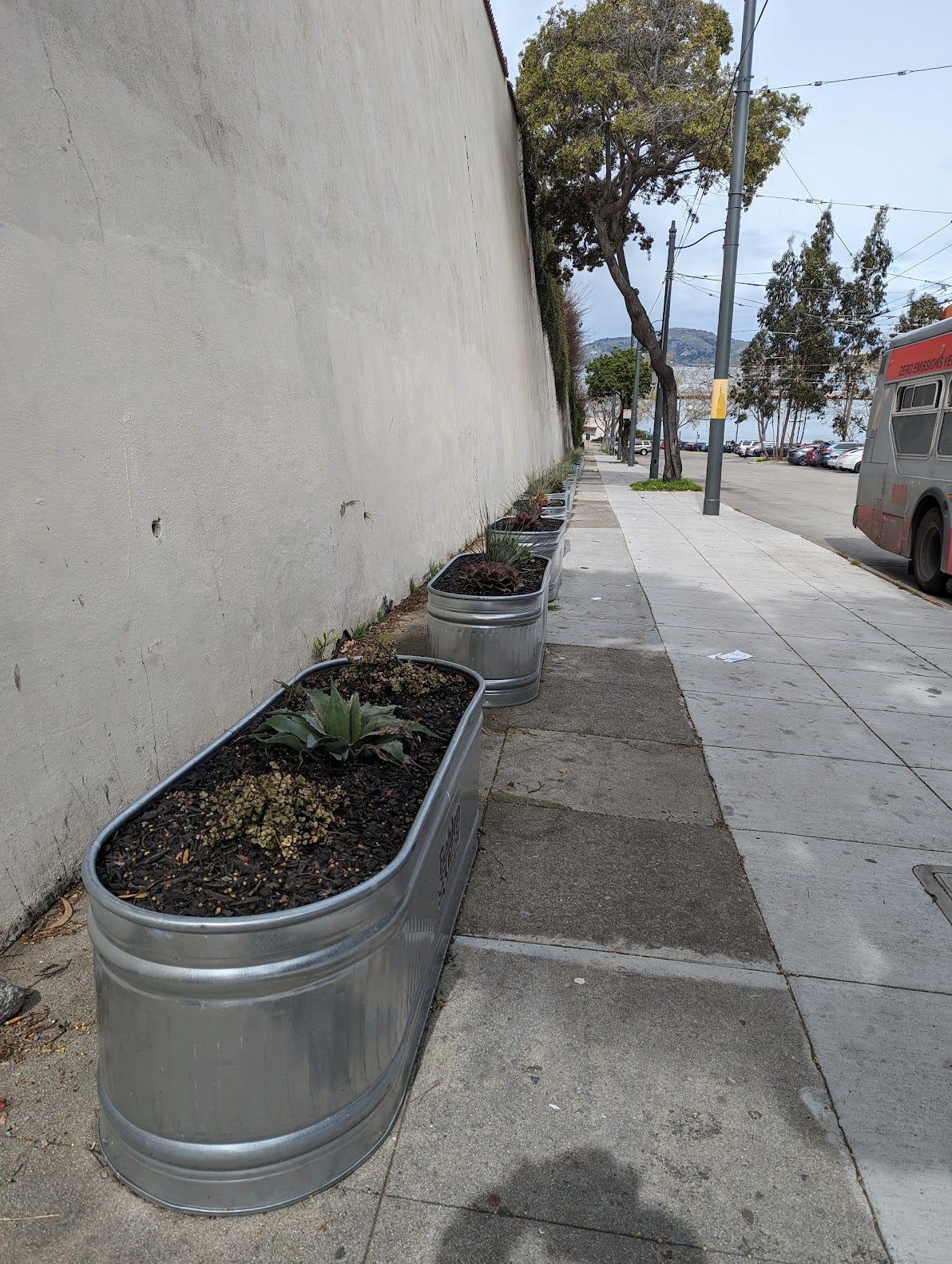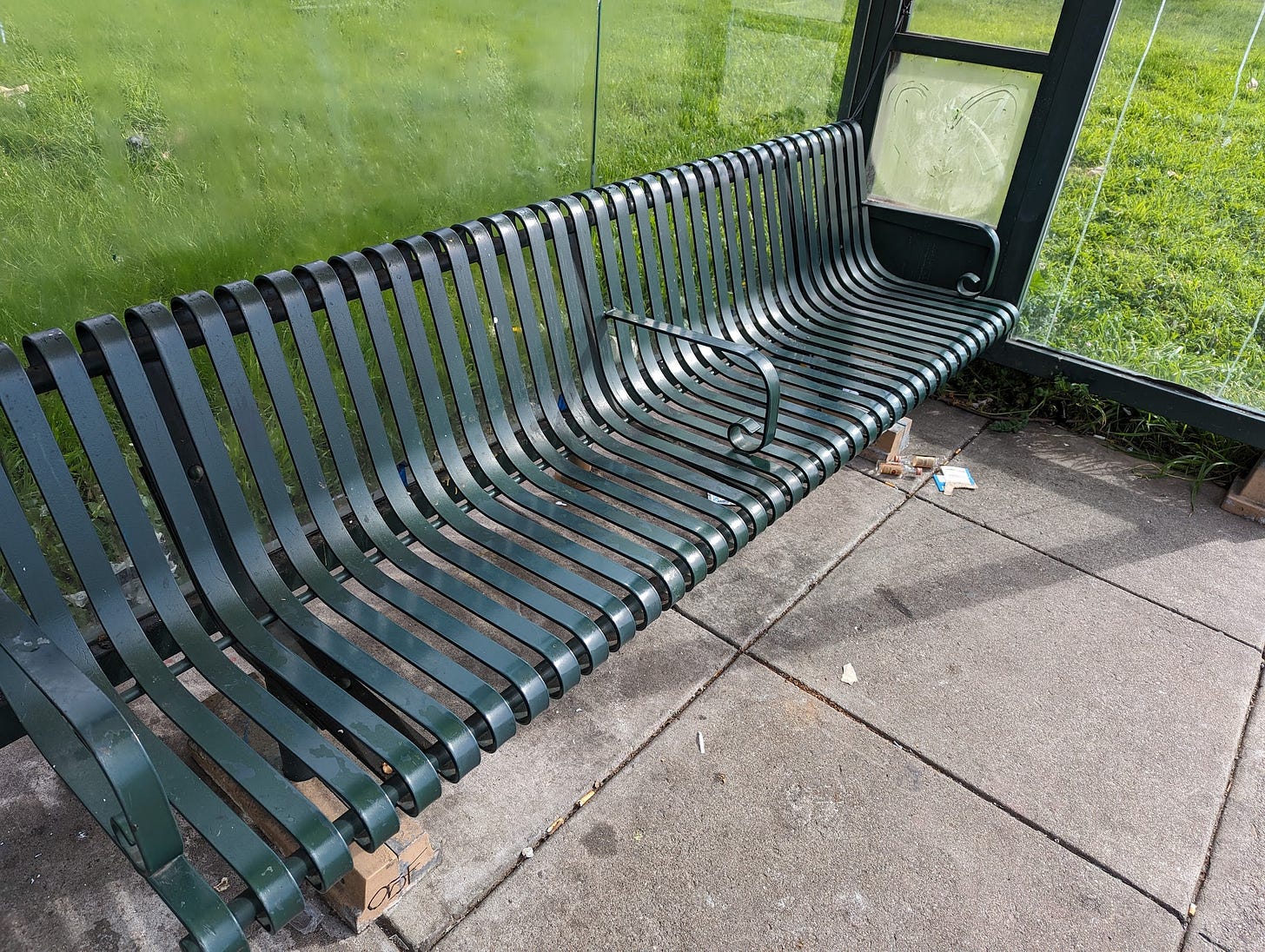Word of the week: Hostile architecture
Then: moats. Now: bus-bench bars and innocuous-seeming planter boxes.
(Yes, I am aware that hostile architecture is two words. I’m treating those two words as a single lexical item.)
What to make of the long metal planter boxes that have been mysteriously appearing on city sidewalks and under freeway underpasses here in the Bay Area and elsewhere? What to call them?

I’d been spotting them around San Francisco and Oakland for at least nine months without knowing they had a name. (My private name for them has been “passive-aggressive urban decor.”) Then, last weekend, an acquaintance clued me in: they’re called hostile architecture. (If you’re reading this, thank you, Lisa D.!) “Hostile” because they’re intended to deter certain behaviors like camping out on the public boulevard or sleeping on bus benches. “Architecture” because these deterrents are crafted, and intentional, rather than natural.
Hostile architecture sometimes goes by other names: hostile infrastructure, hostile design, defensive building, anti-homeless design. “These are all ways of saying ‘don’t make yourself at home’ in public,” wrote Winnie Hu in a November 2019 story for the New York Times. “This so-called hostile architecture has flourished in New York, even as the city has significantly added more public space in the last decade, including new plazas and parkland, pedestrian areas once used for cars and reclaimed industrial waterfront.”
New York was a hostile-architecture pioneer; Bay Area cities began following suit a couple years after that article appeared.
The planter boxes, which at least bring some aesthetic value to their surroundings (they’re weighted with concrete to prevent their being moved), are one of the more recent examples of the trend. Others include metal bars that bisect bus benches to discourage reclining, sharp spikes set into ramps to deter skateboarders, and even — a harbinger — “anti-pee walls” that repel urine.

Hostile architecture is a newish term — the earliest usage I’ve seen is in a March 2018 story in Architectural Digest headlined “What’s Behind the Uptick in Hostile Architecture?” — but its spirit is as old as human civilization. Walled cities and moated castles also say “Don’t even think about coming here.” The new hostility, however, is controversial because it’s aimed at the powerless: kids on skateboards, adults without permanent housing. The solutions may be beautiful — in that AD story, check out the sculptural metal benches designed in 2010 for the South Philadelphia Transit Authority — but if you belong to the wrong demographic, they convey a silent threat. I’m reminded of the famous Anatole France line, written in 1894, about “the law, in its majestic equality,” which “forbids rich and poor alike to sleep under bridges, to beg in the streets, and to steal their bread.” The law, and now the architecture.


City folk may not know but those bougie galvanized flower containers sure look like livestock waterers.
(OK, I'm from Chicago but have been in Iowa long enough to know what these look like.)
Around here, I see so many odd attempts to prevent the use of any flat surface from... I guess... anything. Little metal tabs, affixed to various concrete steps , ledges and ramps. Maybe it's to force those damn kid skate board types away.
But...will they go on our lawns now???
The artist Sarah Ross designed a set of leisure suits, called "Archisuits", that compensate for hostile architecture: https://www.google.com/search?q=archisuits